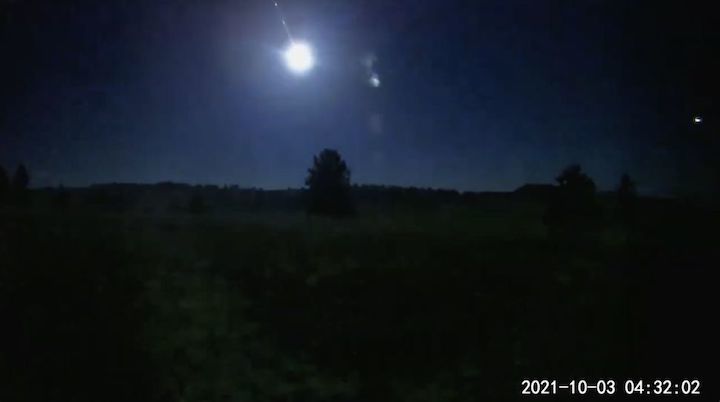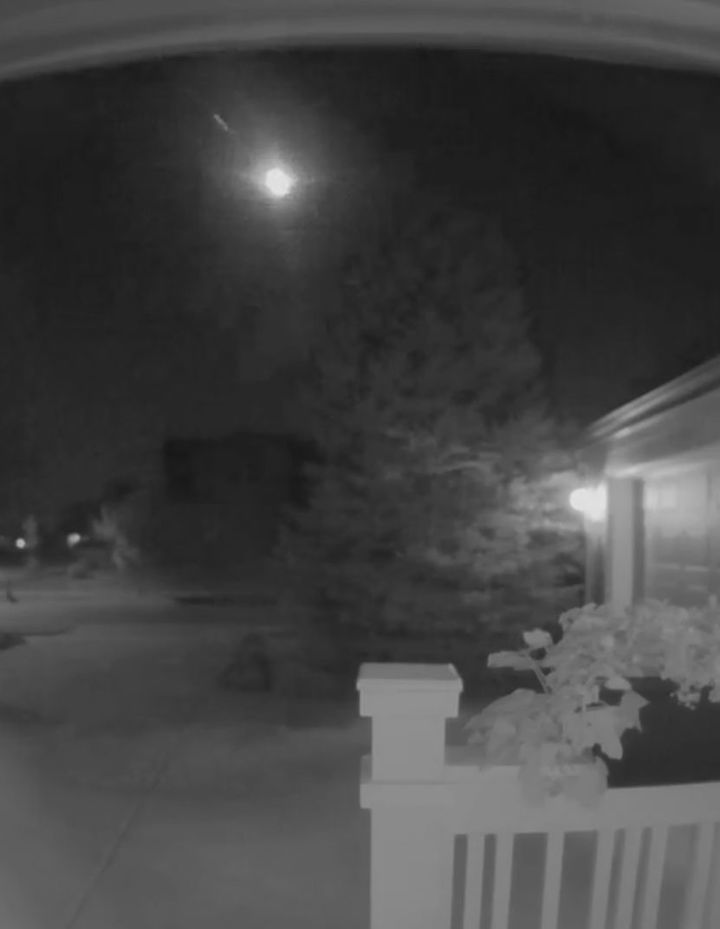5.10.2021

AMS
At least dozens of people reported seeing a brilliant fireball over Colorado early Sunday (Oct. 3).
The American Meteor Society (AMS) cataloged more than 40 reports across three states, largely in the Denver area, around 4:30 a.m. CDT (5:30 a.m. EDT; 1030 GMT). Observers saw the meteor at least as far south as Santa Fe, New Mexico; the two cities are separated by roughly 400 miles (640 kilometers).
One resident of Evergreen, Colorado reported that the flash was so bright that it charged his solar-powered lights, according to a local CBS report. A robotic astronomical observatory in the Colorado Rockies, called the Cloudbait Observatory, captured the streak on its cameras, the report added — and various doorbell cameras in Colorado spotted the flash, too.
Fireballs result from somewhat larger meteors — dust fragments from space — that strike the Earth's atmosphere at high speeds. Rarely do pieces of a meteor make it down to the ground, and such pieces are called meteorites.

AMS
Nobody has reported meteorites yet from this Colorado fireball, although local scientists are keeping an eye out and asking the public to report anything they find. Any suspected meteors should not be touched with your bare hands so as not to contaminate them, as oils and microbes on your skin can degrade the space rock, according to NASA. Our sister site LiveScience has a brief guide to finding meteorites.
"Whether anything gets found or not remains to be seen, but there's a good chance that there's at least several pounds of material on the ground," Chris Peterson, a research associate at the Denver Museum of Nature who also works at Cloudbait, told CBS.
Peterson estimated the fireball broke up around 10 miles to 20 miles (16 km to 32 km) above the ground, a relatively low altitude compared with the typical bright flash at around 60 miles to 70 miles (97 km to 113 km). More generally, fireballs can enter the atmosphere at speeds far exceeding the sound barrier — between 25,000 and 160,000 mph (about 40,000 to just under 260,000 kph), according to the AMS.
While most fireballs (like this one) are harmless, larger fireballs that are very close to the ground can cause serious damage. A 2013 meteor event over the city of Chelyabinsk in central Russia created a blast roughly equivalent to 400-500 kilotons of TNT, which is about 26 to 33 times the energy released by the Hiroshima bomb. Fragments from the fireball reportedly damaged buildings, broke windows and injured more than 1,200 people.
NASA has a network of telescopes and partner institutions regularly scanning the skies for larger asteroid threats, under its Planetary Defense Coordination Office. Asteroids are larger space rocks that orbit the sun, and a portion of those space rocks come near Earth. Happily, no imminent threats to Earth have been found, although the agency keeps looking just in case.
Quelle: SC
